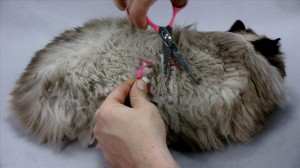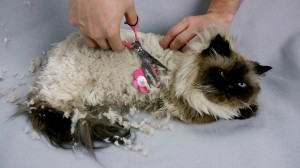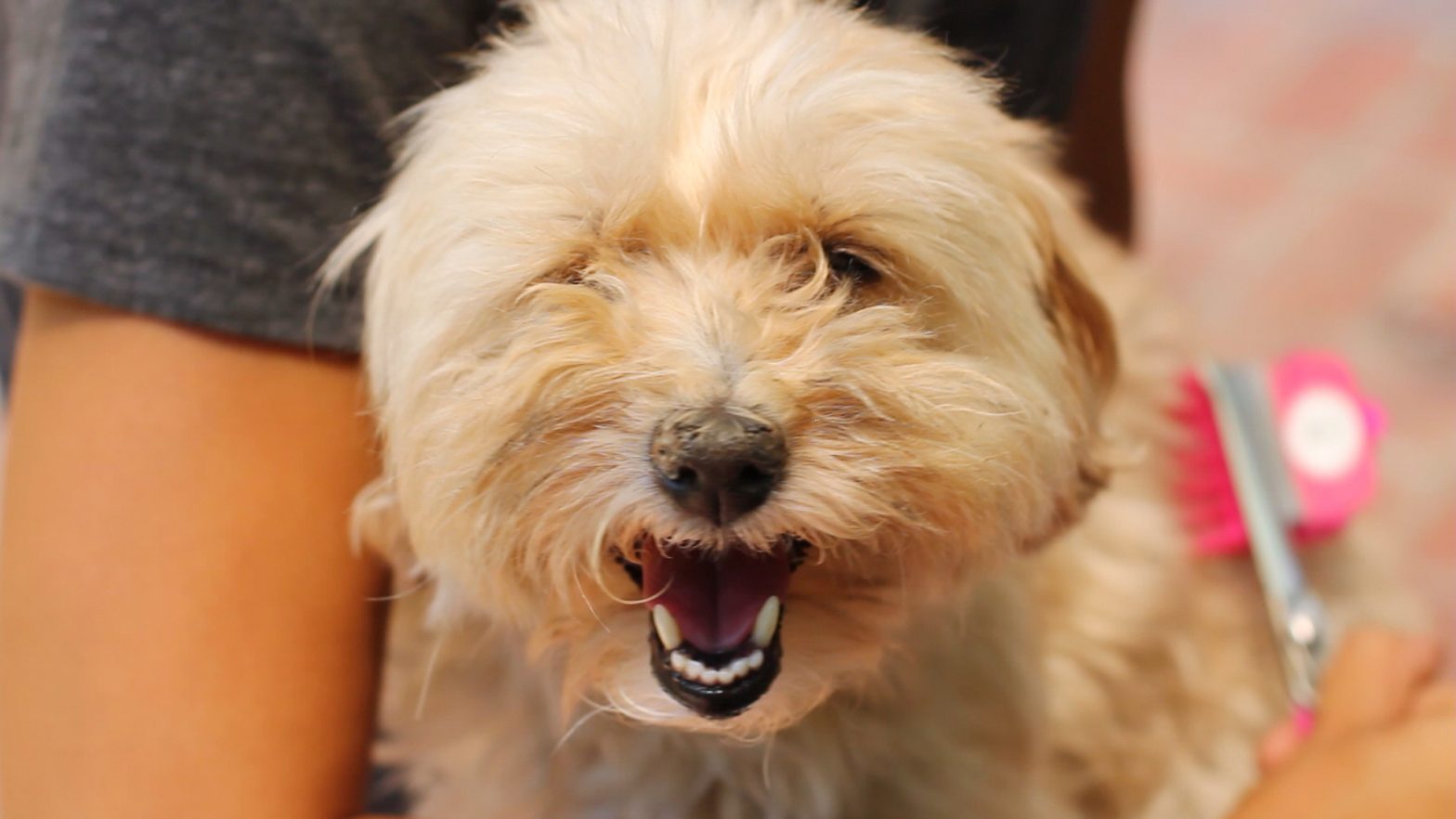The body of your pet can be easy to maintain on top, but more difficult around the belly and groin areas. Before starting to seriously groom, of course, all fur should be clean and brushed/combed out. When clipping hair on the body, care should be taken not to completely deprive the pet of the protection that fur affords it against the weather. Use a Scaredy Cut comb attachment to produce a short cut that still insulates it to a reasonable degree against sun damage and inclement weather.
Grooming the Neck
Some pets have a ruff that can be very thick and difficult to groom through. Start where the hair is thinner and then brush and comb your way through the fur. Be on the alert for injuries or hot spots that thick hair can conceal.
Spend some time where your pet’s collar lies, as the hair can easily mat here. If a major clipping is desired, cut the bulk of hair away and then go against the fur with Scaredy Cut®, clipping rapidly to even out the trim. Be sure to follow the lines of your pet’s body for the best cut. Change out the Scaredy Cut® attachments frequently to easily blend short-to-long or long-to-short trimming.


Grooming the Chest
This can be where the coat is thickest and also where many pets start picking up dirt and debris, especially if they are smaller and lower to the ground. Keeping the lower part of the chest clipped can help prevent this. You can still have an attractive ruff of hair; just use the same short, rapid cuts recommended for the neck and ruff to blend the upper chest fur with the shorter fur on the lower chest and belly.
Grooming the Belly
On small and low-slung dogs, belly fur picks up a lot of dirt, debris, etc. Trim this close, being aware of nipples, any sensitive spots and genitals. Trim around the junctures of body and legs. Check for parasites, hot spots, injuries during this procedure. Clip against the hair, from the back to the front, taking care to stretch out the front legs and clipping the hair around the ‘pits’. This can be a site for hotspots.
Dealing with Cat Sensitivity
Cats can have issues with being touched on the belly, so it’s important to introduce brushing and combing gradually and positively. Success stories usually involve favourite foods and combing/brushing/clipping small sections of the coat at a time. If your cat is especially sensitive, break up grooming into minute-long segments. With some training, many pets can learn to stretch out on their back for ease of access, but this takes time and trust.

